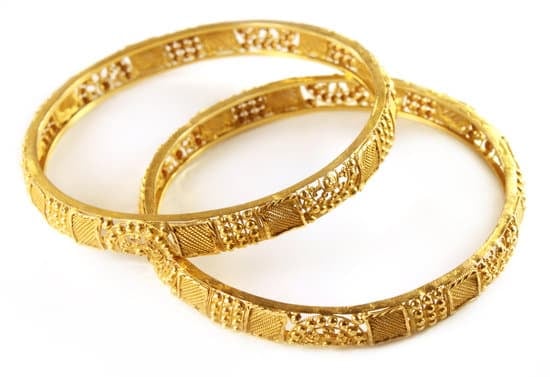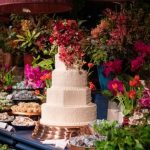De Wedding, a celebration of love and unity, is a significant cultural event in many communities worldwide. From unique customs and traditions to delicious delicacies and beautiful attire, De Wedding encompasses a rich tapestry of culture and heritage. In this article, we will explore the beauty and cultural significance of De Wedding, delving into its history, traditions, and modern influences.
De Wedding holds a special place in the hearts of individuals and communities around the world. It is not only a celebration of love between two people but also a reflection of the cultural identity and heritage of those involved. From Africa to Asia, Europe to the Americas, De Wedding rituals showcase the diversity and richness of different cultures.
Throughout this article, we will discuss the history and traditions of De Wedding, examining its significance in various communities. We will also take a closer look at unique customs and ceremonies associated with De Wedding around the world.
In addition, we’ll provide valuable tips and advice for couples planning their perfect De Wedding, as well as insights into traditional attire, contemporary trends, food and drink preferences, music and dance performances during these celebrations. Join us on this journey as we explore the wonderful world of De Weddings.
The History and Traditions of De Wedding
De Wedding, also known as the wedding ceremony, holds a special place in every culture and community around the world. The history of De Wedding dates back thousands of years and has evolved into a rich tapestry of customs and traditions that are unique to each region. From ancient rituals to modern-day practices, the significance of De Wedding is deeply rooted in the cultural and social fabric of societies.
The history of De Wedding can be traced back to ancient civilizations such as the Egyptians, Greeks, and Romans, where weddings were seen as sacred unions between two individuals and their families. Over time, these traditions have been passed down through generations, with each culture adding its own customs and rituals to create a diverse tapestry of wedding traditions around the world.
In many cultures, weddings are not just a union between two individuals, but also a merging of families and communities. The traditions associated with De Wedding often reflect this interconnectedness, with ceremonies that involve blessings from elders, exchange of symbolic gifts, and festive celebrations that bring people together in joyous union.
Whether it’s the intricate Mehndi designs for Indian brides or the ceremonial breaking of a glass in Jewish weddings, these timeless customs continue to play an integral role in uniting couples and their loved ones.
The Significance of De Wedding in Different Cultures and Communities
De Wedding holds immense significance in various cultures and communities around the world. It serves as a symbol of love, unity, and the coming together of families. This section will explore the diverse meanings and importance of De Wedding in different parts of the globe.
Symbolism and Unity
In many cultures, De Wedding represents the union of not just two individuals, but also two families. It is a time for celebration, rejoicing, and creating lasting bonds between relatives and friends. The exchange of vows and rings signifies a commitment to love, honor, and cherish one another for a lifetime.
Traditional Rituals and Customs
Each culture has its own set of unique customs and traditions associated with De Wedding. From traditional attire to specific rituals, these customs hold deep cultural and spiritual significance. For example, in some communities, the bride and groom may participate in intricate ceremonies symbolizing blessings for their future life together.
Community Involvement
De Wedding often involves the participation of an entire community, showcasing the collective support for the couple embarking on this new chapter in their lives. From religious leaders to elders offering their wisdom and blessings, De Wedding ceremonies are deeply rooted in communal involvement. The presence of loved ones coming together to witness and celebrate the union adds to the richness of this cultural celebration.
Understanding the significance of De Wedding in different cultures sheds light on the values, beliefs, and traditions upheld by various communities worldwide. It serves as a powerful reminder that love knows no boundaries and brings people together in beautiful ways.
Unique De Wedding Customs and Ceremonies Around the World
When it comes to weddings, each culture and community has its own unique customs and ceremonies that make the celebration truly special. From traditional rituals to modern innovations, De Wedding customs around the world are a fascinating exploration of love, unity, and tradition.
Some unique De Wedding customs and ceremonies around the world include:
1. Indian Weddings: In India, weddings are elaborate affairs lasting multiple days, with a variety of rituals and ceremonies such as the Haldi ceremony (where turmeric paste is applied to the bride and groom for glowing skin) and the Sangeet (a musical night of dancing and singing).
2. Mexican Weddings: Mexican weddings often feature a ceremonial lasso or “lazo” that is placed around the couple’s shoulders to symbolize their unity. There is also a tradition called “el lazo y el nudo” where the couple exchanges 13 coins as a symbol of trust and prosperity.
3. Japanese Weddings: In Japan, traditional Shinto wedding ceremonies involve exchanging sake cups in a ritual called “san-san-kudo”, which represents the joining of families. The couple also takes part in a ceremonial purification ritual before exchanging vows.
These are just a few examples of the diverse and beautiful De Wedding customs found around the world. No matter where you go, you will find an array of traditions that reflect the values and beliefs of each culture, making De Wedding celebrations rich with meaning and significance.
Planning the Perfect De Wedding
Start With a Clear Vision
One of the first steps in planning a perfect de wedding is to establish a clear vision for the event. The couple should discuss their preferences, traditions, and cultural elements they want to incorporate into their special day. Whether it’s a traditional ceremony or a modern fusion of customs, having a clear vision will help guide all other aspects of the planning process.
Consult With Cultural Experts
For couples who want to honor their cultural heritage or incorporate specific customs into their de wedding, it can be helpful to consult with cultural experts. These experts can provide valuable insight into traditional practices, rituals, and symbolic elements that can add depth and meaning to the celebration. Additionally, they can offer guidance on how to respectfully integrate these traditions into a contemporary wedding setting.
Embrace Personalization and Creativity
While honoring cultural traditions is important, couples should also feel empowered to personalize and infuse creativity into their de wedding. Whether it’s through unique decor, custom attire, or personalized vows, embracing personalization and creativity can make the celebration truly memorable and reflective of the couple’s love story. From incorporating family heirlooms to creating custom ceremonial elements, there are countless ways for couples to infuse their personalities into every aspect of their de wedding.
De Wedding Fashion
In various cultures, the bride and groom’s attire is symbolic of their heritage and social status. For example, in Indian weddings, the bride often wears a red sari or lehenga, representing prosperity and fertility, while the groom may don a sherwani or kurta. In Nigerian weddings, the bride may wear a colorful Aso Ebi (family uniform) with elaborate headpieces, beads, and accessories, while the groom may opt for a traditional Agbada or Dashiki garment.
However, as De Weddings continue to evolve and embrace modern influences, contemporary fashion trends are also making their mark. Many couples are incorporating elements of Western bridal gowns or suits into their attire while still maintaining traditional touches. From fusion dresses to custom-designed ensembles, today’s brides and grooms have more options than ever to express their personal style while honoring their cultural roots.
As De Weddings become more diverse and inclusive, there is a growing trend of couples blending different cultural elements into their attire. Whether it’s combining traditional garments from both sides of the family or incorporating symbols of unity into their outfits, these fashion choices are a beautiful representation of love transcending cultural boundaries.
The evolution of De Wedding fashion serves as a testament to the rich tapestry of traditions and influences that contribute to these celebrations. As couples continue to merge tradition with innovation in their attire choices, they create an even more meaningful union that honors both the past and future of De Wedding customs.
Delicious Delicacies
De Wedding celebrations around the world are not only a time for love and unity but also a time for indulging in delicious delicacies. Food and drinks play an integral role in De Wedding celebrations, often showcasing the cultural heritage and culinary traditions of the marrying couple and their families. From lavish feasts to unique culinary customs, the role of food and drinks in De Wedding celebrations is rich with tradition and significance.
In many cultures, the wedding feast is a symbol of abundance and prosperity, with an emphasis on serving an array of dishes representing good luck, health, and happiness. For example, in Indian weddings, it is customary to have a wide selection of sweets and savory dishes such as biryani, curries, and tandoori specialties. Similarly, in Chinese weddings, symbolic foods like fish and noodles are served to represent blessings for fertility and long-lasting relationships.
Furthermore, the drinks served at De Weddings also hold cultural importance. For instance, in Mexican weddings, traditional beverages such as horchata or aguas frescas are often served alongside tequila as a way to honor the couple’s heritage.
The significance of these drinks lies not only in their taste but also in the connection they provide to the couple’s cultural identity. Overall, food and drinks at De Weddings serve as a means to celebrate heritage, bring families together, and create lasting memories for all involved.
| Wedding Tradition | Cultural Significance |
|---|---|
| Indian Weddings | Abundance & Prosperity |
| Chinese Weddings | Blessings for Fertility & Long-lasting Relationships |
| Mexican Weddings |
De Wedding Music and Dance
Music and dance are integral parts of de wedding celebrations around the world. From traditional rituals to modern ceremonies, these forms of expression play a crucial role in commemorating love and unity. In many cultures, music and dance are used to bring people together, celebrate the union of two individuals, and honor the traditions of their community.
In some regions, rhythmic beats and colorful dances are performed during de wedding ceremonies as a way to invoke blessings for the couple. These expressions of joy and happiness symbolize the beginning of a new journey for the bride and groom. The music played at de weddings varies widely depending on the culture, with some featuring live bands, while others incorporate traditional instruments such as drums, flutes, or stringed instruments.
Furthermore, de wedding dances often hold deep cultural significance. Many communities have specific traditional dances that are performed during weddings as a way to pay homage to their heritage. These dances may also serve as a form of storytelling or a representation of various aspects of life such as courtship, marriage, or fertility. Overall, music and dance are powerful mediums through which couples can celebrate their love and express their commitment to one another.
| Aspect | Description |
|---|---|
| Importance | Music and dance play an integral role in celebrating love and unity during de wedding ceremonies. |
| Cultural Significance | Rhythmic beats and colorful dances symbolize joy, happiness, and invoke blessings for the couple in many cultures. |
| Variation | The type of music played at de weddings varies depending on the culture with some featuring live bands while others incorporate traditional instruments such as drums or flutes. |
The Future of De Wedding
In conclusion, as the world continues to evolve and cultures blend, the future of de wedding appears to be a combination of preserving traditional customs while embracing modern influences. The beauty and significance of de wedding celebrations will remain a vital part of various communities and cultures around the world. The evolving traditions and modern influences will continue to shape these joyous occasions, making them even more inclusive and diverse.
With the increased interconnectedness brought about by technology and globalization, de wedding customs are being shared and celebrated across different cultures. This exchange of traditions not only enriches the experiences for couples and their guests but also promotes understanding and unity among diverse communities. As a result, future de weddings are likely to become even more inclusive, incorporating elements from various cultures to create unique and meaningful celebrations.
Furthermore, as societal norms continue to shift, modern influences such as gender equality, sustainability, and individuality are also making their mark on de wedding ceremonies. Couples are embracing non-traditional roles, eco-friendly practices, and personalized touches that reflect their personalities.
With this trend likely to continue in the future, we can expect to see de weddings that are more environmentally conscious, inclusive of all individuals involved, and filled with personal touches that truly speak to the couple’s love story. Overall, as we look ahead to the future of de wedding celebrations, it is evident that these joyous occasions will continue to be a beautiful tapestry of tradition and modernity.
Frequently Asked Questions
What Does Veere Di Wedding Mean?
“Veere Di Wedding” translates to “Friend’s Wedding” in English. The movie revolves around the lives of four friends and their experiences leading up to a wedding.
Who Is the Actress in the Song Tareefan?
The actress in the song “Tareefan” is Kareena Kapoor Khan. She not only stars in the music video but also appears in the movie “Veere Di Wedding.”
What Was Bhandari’s Name in Veere Di Wedding?
In the movie “Veere Di Wedding,” Bhandari’s name was Rishabh Malhotra. He plays a significant role as one of the love interests in the film, adding to the storyline of the main characters.

I have been involved in marriages for over 20 years helping couples and singles understand more about them.





